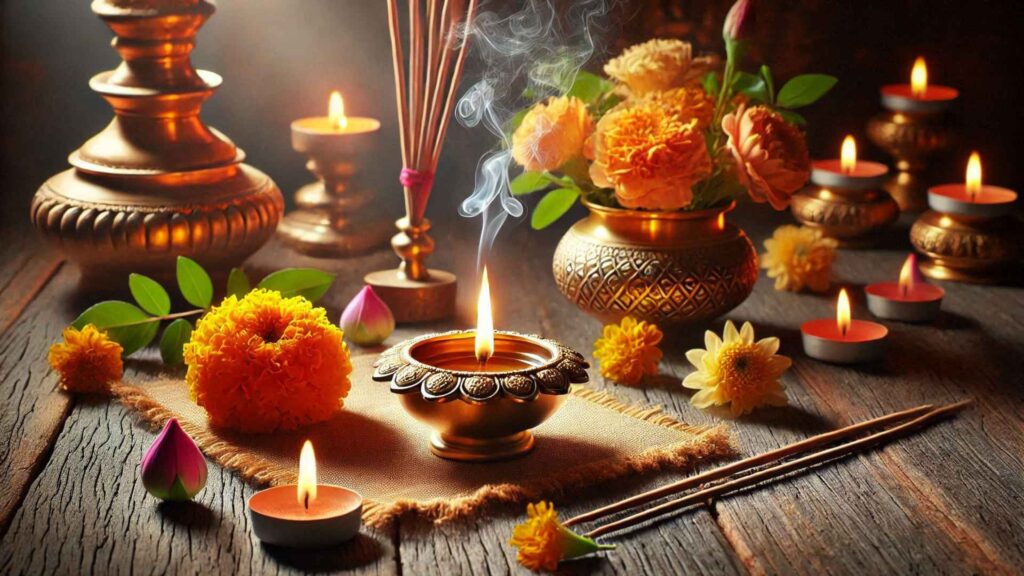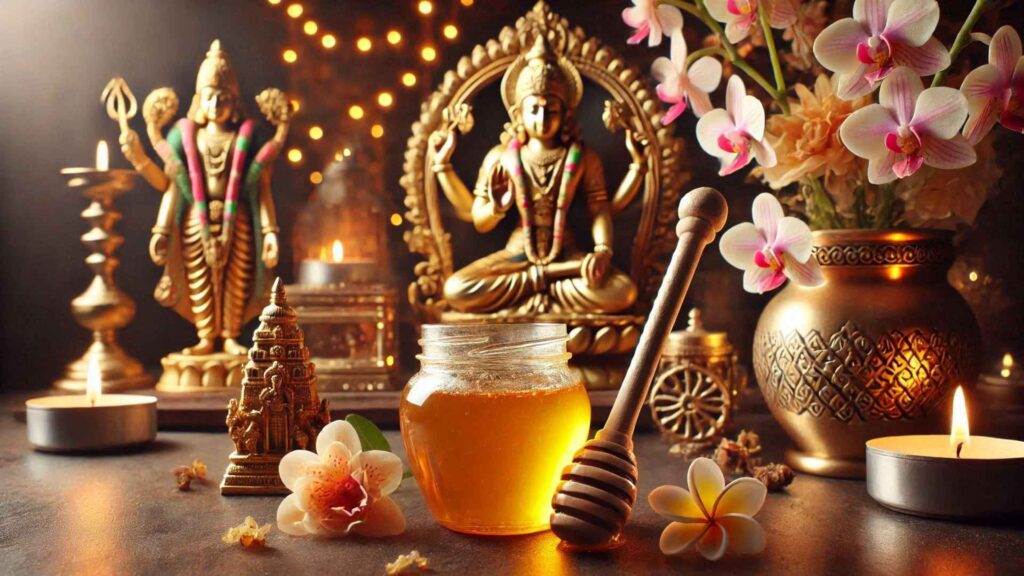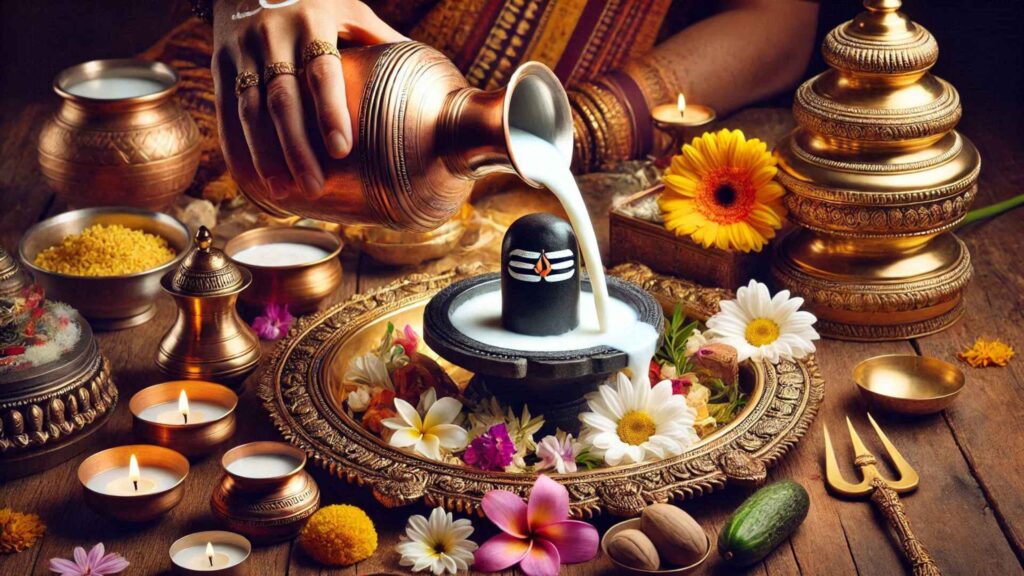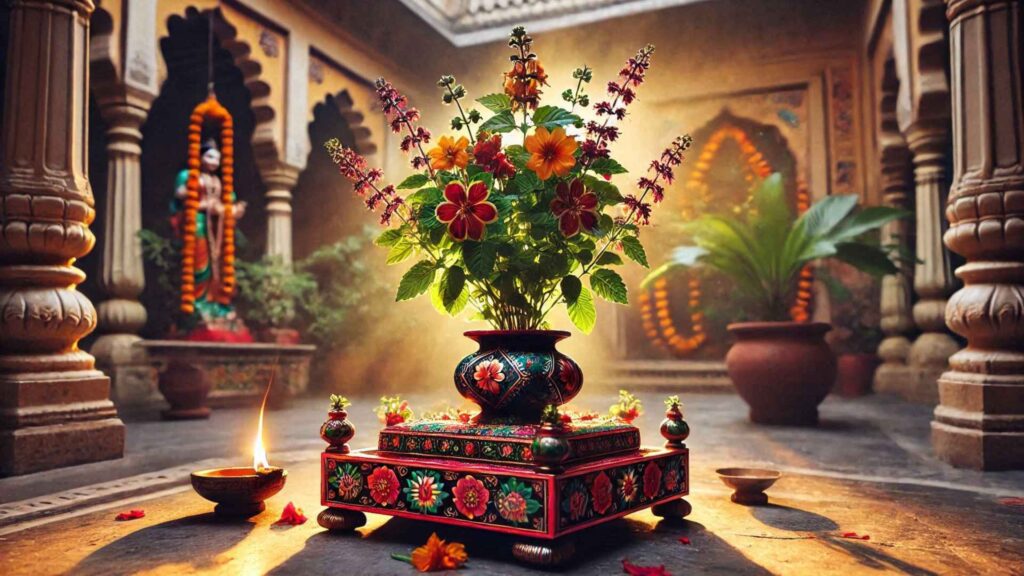Element Spiritual Meaning in Hinduism: Ghee, Honey, Milk, Tulsi, and Gangajal
Sacredness in Hinduism
Hinduism, a spiritual tradition that celebrates the interconnectedness of all life, reveres certain elements as sacred. Among these, ghee, honey, milk, tulsi leaves, and sacred water (Gangajal) hold profound spiritual significance. These elements transcend their physical forms, serving as bridges between the material and divine realms.
Read More About sacred texts
Hook Statement
Imagine the warm glow of a ghee lamp, the divine sweetness of honey offered to deities, or the soothing touch of Gangajal in a purification ritual. These elements are not just objects but spiritual experiences that connect the worshipper to the cosmos.
Overview
In Hinduism, these elements are central to rituals such as pujas (worship ceremonies), abhishekam (ritual bathing), and yajnas (fire sacrifices). Each carries unique symbolism: ghee signifies purity, honey represents sweetness, milk embodies nourishment, tulsi symbolizes devotion, and Gangajal epitomizes purification.
Why They Matter Today
In the modern world, these sacred elements are not only vital in religious practices but also offer timeless lessons on sustainability, respect for nature, and the spiritual value of everyday resources.
2. Historical Background: The Origins of Sacred Elements
Ghee

Ghee has been a sacred offering since the Vedic period. The Rigveda describes it as an essential component of yajnas, where it was offered to Agni (the fire god). According to mythology, ghee emerged from the Samudra Manthan (cosmic churning), symbolizing its divine origin.
Honey

Honey, or Madhu, is celebrated in the Atharvaveda as a sacred substance with healing and spiritual properties. In ancient times, honey was offered to deities as a symbol of prosperity and harmony. It also became a key ingredient in panchamrit, a sacred offering of five elements.
Milk and Dairy Products

Milk is associated with Kamadhenu, the celestial cow believed to grant all desires. The Bhagavata Purana recounts how milk and butter played significant roles in the life of Lord Krishna, further elevating their sacred status. Over centuries, milk became a symbol of purity and abundance in Hindu rituals.
Tulsi Leaves

Tulsi, or holy basil, is revered as the earthly manifestation of Goddess Lakshmi. The Padma Purana narrates the legend of Tulsi’s sanctity, particularly in the worship of Lord Vishnu. Its inclusion in rituals dates back to ancient times.
Sacred Water (Gangajal)

The Ganga River, personified as Goddess Ganga, is described in the Mahabharata and Ramayana as descending from the heavens to purify humanity. Gangajal is believed to cleanse sins and facilitate spiritual liberation, making it indispensable in Hindu rituals.
3. Spiritual Significance: The Deeper Meaning of Sacred Elements
Ghee
Ghee represents purity, transformation, and enlightenment. Used in yajnas, it symbolizes the selfless act of offering to the divine. The flame of a ghee diya embodies the eternal light of the soul.
Honey
Honey signifies the sweetness of life and divine grace. It is a symbol of abundance and prosperity, often used in panchamrit to represent the unity of different elements of existence.
Milk and Dairy Products
Milk embodies nourishment and motherly love. It represents the sustaining power of the universe and is used in abhishekam to symbolize spiritual purification.
Tulsi Leaves
Tulsi is a purifier of the soul and the environment. Its leaves are indispensable in Vishnu worship, signifying devotion, humility, and surrender to divine will.
Sacred Water (Gangajal)
Gangajal is the ultimate purifier. It cleanses physical and spiritual impurities, symbolizing rebirth and liberation. Its presence in ceremonies underscores the cyclical nature of life and death.
4. Practical Application: Sacred Elements in Worship
Ghee
- Lighting Lamps: Ghee is used to light diyas during daily prayers and festivals like Diwali, symbolizing enlightenment.
- Homas: It is poured into sacrificial fires as a divine offering.
Honey
- Panchamrit: Honey is mixed with milk, curd, ghee, and sugar to create a sacred offering.
- Temple Rituals: It is used in anointing deities, representing prosperity and divine sweetness.
Milk and Dairy Products
- Abhishekam: Milk and curd are poured over idols during purification rituals.
- Prasad: Dairy-based sweets like butter and kheer are distributed as blessings.
Tulsi Leaves
- Daily Offerings: Tulsi leaves are placed on deities, especially Vishnu, as an act of devotion.
- Household Worship: Tulsi plants are worshipped daily in Hindu homes.
Sacred Water (Gangajal)
- Purification: Gangajal is sprinkled during rituals to sanctify spaces and individuals.
- Ceremonial Use: It is used in major life events like weddings and funerals.
5. Cultural Impact: The Influence of Sacred Elements
Ghee
Ghee is integral to Hindu festivals and daily life, symbolizing prosperity. It also holds a prominent place in traditional Indian cuisine and Ayurveda.
Honey
Honey’s significance extends to health and spirituality. It is celebrated during festivals like Madhu Purnima, highlighting its role as a symbol of sweetness and abundance.
Milk and Dairy Products
Milk and butter are central to festivals like Janmashtami, celebrating Lord Krishna. They also feature prominently in Hindu art and literature.
Tulsi Leaves
Tulsi is celebrated during Tulsi Vivah, a symbolic marriage ceremony with Lord Vishnu. It remains a spiritual and medicinal cornerstone in Indian households.
Sacred Water (Gangajal)
Gangajal inspires art, literature, and movements for environmental conservation. Events like the Kumbh Mela honor its spiritual significance.
6. Conservation and Preservation
Challenges
- Pollution of the Ganga River.
- Overharvesting of Tulsi plants.
- Unsustainable dairy practices affecting milk quality.
Preservation Efforts
- Namami Gange: A government initiative to clean the Ganga.
- Promotion of organic farming for Tulsi cultivation.
- Encouraging sustainable dairy production.
Future Outlook
By integrating ancient reverence with modern sustainability, these sacred elements can be preserved for future generations.
7. Expert Insights
- Religious Scholars: “Sacred elements like ghee, honey, and Gangajal connect us to the divine, symbolizing purity and spiritual enlightenment.”
- Scientific Research: Studies highlight the health benefits of Tulsi, honey, and ghee, bridging tradition with science.
- Modern Interpretations: Experts emphasize the ecological and spiritual importance of these elements in promoting sustainable living.
8. Conclusion
The sacred elements of Hinduism—ghee, honey, milk, tulsi leaves, and Gangajal—are more than ritual offerings. They symbolize purity, nourishment, and divine connection, forming an integral part of Hindu spirituality.
Which of these sacred elements do you connect with in your spiritual practices? Share your experiences and explore more on Hinduvism.com.


